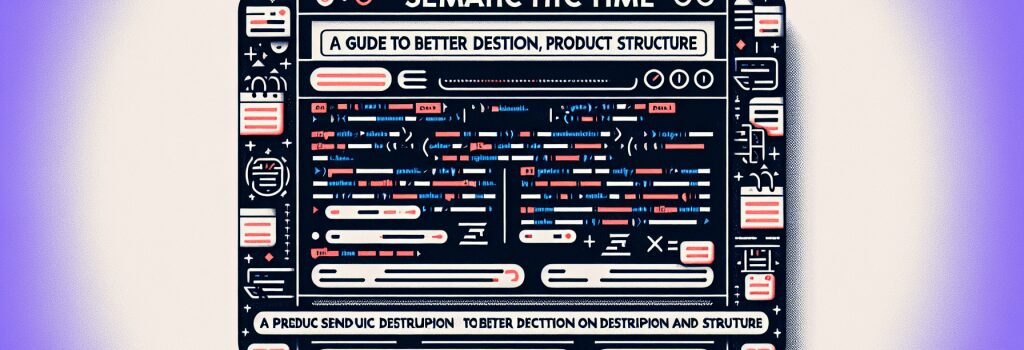Semantic HTML for Product Pages: A Guide to Better Description and Structure

Okay, folks! Grab your keyboards and strap in your mouse, today we are diving into the world of web development! More specifically, we are going to unravel the mystifying labyrinths of semantic HTML for product pages. And don’t worry, I’m not just spewing out tech jargon to sound cool. I promise by the end of this, you’ll be spouting ‘semantic HTML’ at parties like it’s your favourite phrase.
Understanding Semantic HTML: A Revolutionary Method
Not to throw you off guard, but let’s start by talking dumplings. Yes, dumplings, those fluffy little packets of joy. So imagine, if all dumplings looked exactly the same, no difference in shape or wrapping, but their fillings could be anything from chicken to chocolate. Sounds horrifying, doesn’t it?
That is exactly how a web page without semantic HTML looks to a blind user or a search engine. Semantic HTML is like that colour coding or shape differentiation in the dumplings, it tells users and search engines what’s inside the wrapper – the structure and content of the web page.
Diving Deeper Into Semantic HTML (Not the Dumpling)
Let’s shelve the dumplings for now and concentrate on the matter at hand – using semantic HTML for product pages.
Product pages are the bread and butter, no, the Filet Mignon of any e-commerce website. It’s where you showcase your products, their descriptions, their price, basically, it’s where you tell your customers, “Hey, look! We’ve got this amazing thing you might like”. But to ensure your message comes across in the most effective way, structuring these product pages using semantic HTML is imperative!
Structuring Product Pages Using Semantic HTML
To structure a product page using semantic HTML, you need to use HTML ‘tags’ that reflect the content they contain. These will look like ordinary HTML tags, but on steroids. You might be accustomed to using a div for almost everything. Welcome to a world where each tag has a special role.
Okay, so you’re not exactly going to write , but you’ll be using more descriptive tags like
For example, every product page must have a
<header> which can include the name of your e-commerce website and maybe the navigation bar. Here’s a simple example: <header> <h1>Best Online Shop <nav> <ul> <li>Home <li>About Us <li>Contact Us <li>ShopWriting Great Descriptions – It’s All In The Details!
Writing product descriptions can seem daunting. It’s like you’re selling a story, not a product. But with semantic HTML, you can break down your descriptions into smaller, more digestible bits – and voila! You have an amazing product description that anyone (and any search engine) can understand and appreciate.
Remember – using semantic HTML on your product pages will ensure that both humans and search engines can read and understand your content better. And in web development world, that’s a win-win!
So folks, the next time you get scared by tags and coding, take a deep breath and think of dumplings… Tasty, well-structured, semantic HTML dumplings. Happy coding! And happy dumpling… Ahem, HTML eating!


